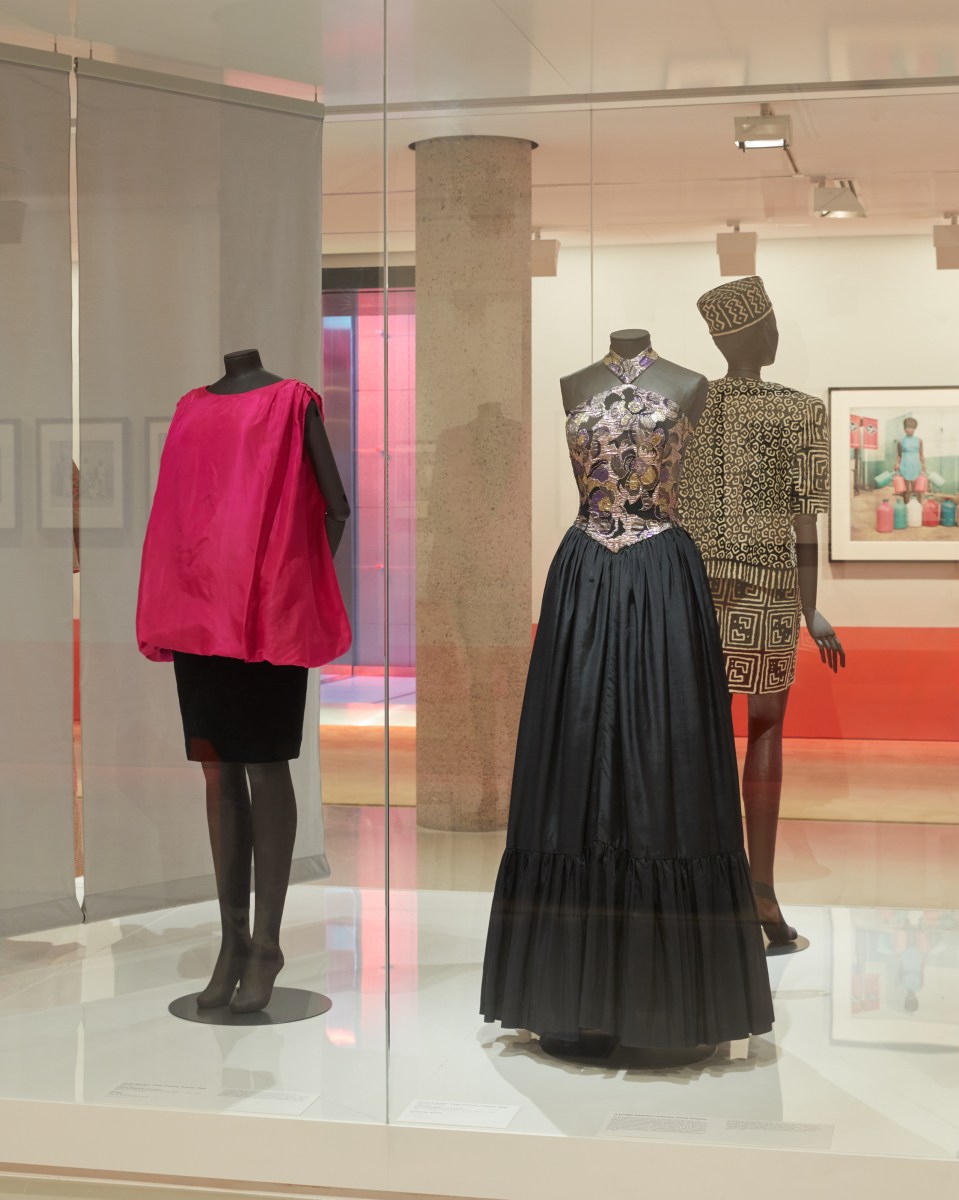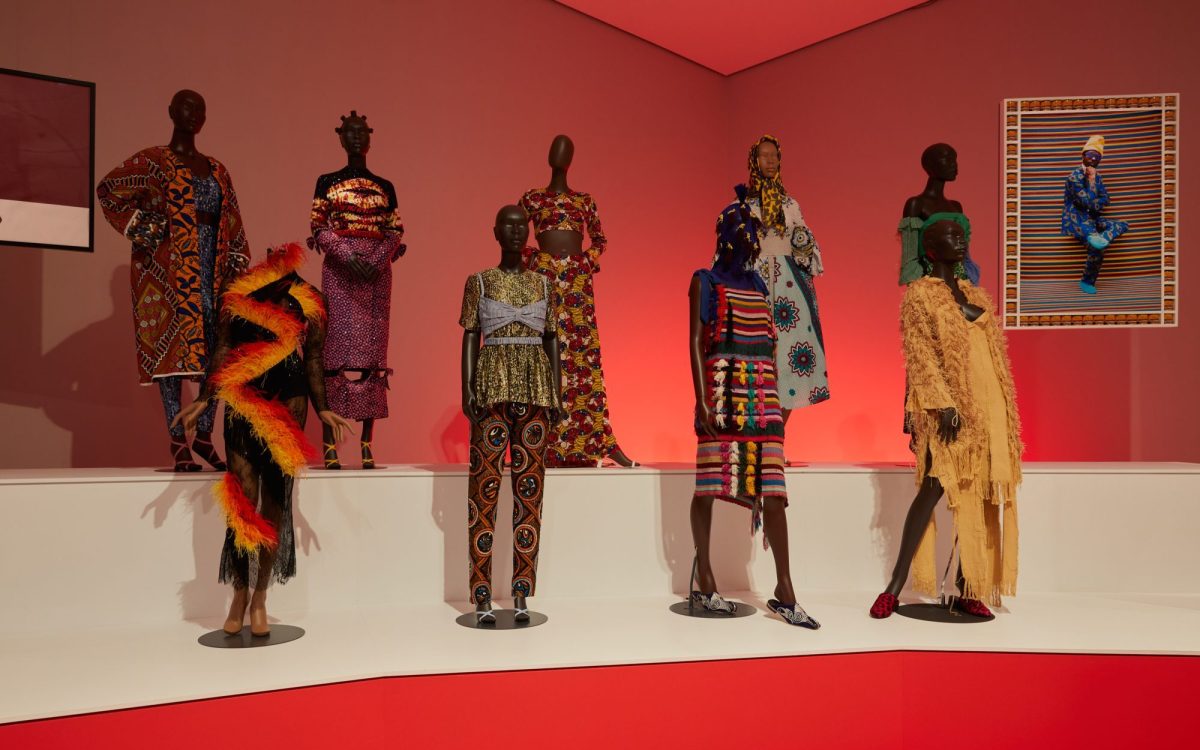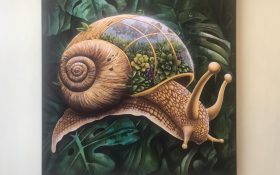Coming from the Victoria and Albert Museum (V&A) in London, Africa Fashion has captured the attention of Melbourne’s fashion-loving crowd and is said to be the largest exhibition of fashion from the African continent presented in Australia.
The breadth of Africa Fashion, which not only includes items from over 50 designers but also photography, video and archival material, is matched by the quality of the presentation where visitors can marvel at bold design statements and eye-opening craftsmanship.
The curated journey begins in a section titled ‘Politics and poetics of cloth’, where social status, political stance, national pride and familial history are communicated through textiles. The semi-circular layout segments each display like a window through time, tracing patterns from as early as the 1920s through to the fight for decolonisation and African independence in 1960.
While the show is organised around seven main themes, such as The African Cultural Renaissance, Capturing Change and Global Africa, these are seamlessly woven into the exhibition design and experience, rather than isolated or disjointed. Social, political and art history are as much imbued in Africa Fashion as the garments, and the exhibition achieves a coherent balance between these aspects that make up the multifaceted nature of fashion.
The colour red is adopted as almost a symbolic metaphor of African pride and agency in the exhibition, from the gradient wall-to-floor carpet in the second gallery space that looks to The Vanguard, to its cheerful dominance of tiered mannequin displays and lighting in the final gallery.
Africa Fashion balances local fashion legends with those achieving international success, including garments by Chris Seydou (often regraded as ‘the father of Africa fashion’), Shade Thomas-Fahm (‘Nigeria’s first fashion designer’), Kofi Ansah (the ‘enfant terrible’ of Ghanaian fashion), Zanzibar brand founder Doreen Mashika, artist and creative director Bubu Ogisi and the avant-garde Loza Maléombho.

The advantages of a fashion exhibition, as compared to catching these extraordinary pieces on the runway, is to be able to zoom in on the details – and Africa Fashion offers plenty that will have viewers’ eyes glued to the display.
What feels like an odd placement, though, is Imane Ayissi’s bold fuchsia satin cape that would surely be a statement piece in any exhibition, but is isolated at the opposite far end of Africa Fashion’s main gallery entrance. The small video display of recorded runway barely does it justice.
Read: Exhibition review: The same crowd never gathers twice, Buxton Contemporary
In many ways, the NGV iteration is Africa Fashion reimagined, with several components unique to Melbourne. The Gallery did a public callout for archival photographs from the local African diaspora and this is displayed as a video slideshow with stories and imagery. There are also pieces from the NGV Collection, such as Lisa Folawiyo’s intricately beaded party dress and series of photographic works by Lakin Ogunbanwo (2020 NGV Triennial) among others.
Hear from Africa Fashion program co-curator Dorcas Maphakela on some of the local artists and workshops to be presented alongside the exhibition.
In addition, there is a NGV Language Exchange on 7 June for tertiary students of non-English speaking backgrounds to participate in a free guided tour of Africa Fashion, followed by a studio workshop led by local jewellery designer Ella Badu.
Africa Fashion is now on display at NGV International (Level 3) until 6 October; ticketed.





